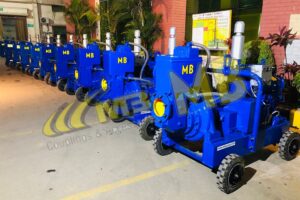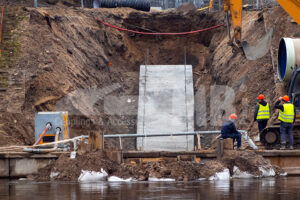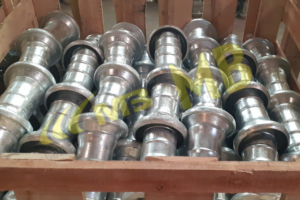Dewatering is essential to many industries, including mining, tunnelling, lift irrigation, building dams, dry docks and storm water drainage. Dewatering, a safe method of removing extra water, can help avoid dangers including mudslides, shaky foundations, and equipment failure due to bogging. Additionally, this guarantees that your worksite is prepared for foundation preparation, excavation, and cement footing pours. And to help you out with this we are always here at: MB Exports: Dewatering Pump Manufacturers & Suppliers in India.
The potential to reduce costs is this technique’s main advantage. Additionally, it works well for draining water from shallow excavations up to 6.5 metres deep in stratified soils. This may also be considered a drawback, particularly if the excavation goes deeper than 7.0 metres.
In construction, there are four primary dewatering techniques:
- Wellpoint.
- Teacher Wells.
- Pumping a sump.
- Wellpoint Deep.
Three types of dewatering are:
Pumps that can transport both liquids and small abrasives, such as sand, are called submersible pumps because they are made to be totally or partially submerged in water. A submersible pump will force the liquid through a discharge line to the surface rather than pushing it there. There are many benefits to using a pump that is submerged or at the same level as the water.
They can use the on-site electrical supply and take up little space as the pump is already submerged in water, there is no need to prime it.The energy efficiency of submersible pumps is excellent.Considering that the pump is submerged, noise is minimal.
Centrifugal pumps: Using a long suction line and strainer dropped into the water, centrifugal dewatering pumps are intended to be mounted on the sump or dam wall. These are typically self-priming for dewatering, so they don’t need to be primed before use. The water is pumped through the outlet pipe into a dam, pond, tank, or another site after the pump has been primed.
Positive displacement pumps with self-priming are known as well point pumps. The main purpose of these pumps is to lower the water table on construction sites so that work may be done there without groundwater flooding the area. They don’t require a separate self-priming system because they can pump a mixture of water and air.
Steps to take into account when choosing dewatering pumps:
As we previously indicated, selecting the incorrect size pump can result in a number of problems. Take the following into consideration when choosing a dewatering pump.
Static Head Pressure: To make sure the pump can generate enough pressure to deliver the necessary vertical flow of water, you must establish the static head (also known as the pressure head).
Flow rate: Choosing a pump that can generate the flow rate required to remove the water is crucial. In addition to the pump, be cautious when deciding on the suction pipeline’s length.
Temperature and height: The suction capacity of the pump can be significantly impacted by the fluid’s temperature as well as the height at which it must work. To make the best decision, discuss the location of the pump with your supplier.
We at MB Exports, Wellpoint Dewatering Accessories Manufacturer in India, guarantee that all of our products are constructed to the highest standards and can function in the most demanding environments, both in India and abroad. If you require a dewatering pump, contact us today.




